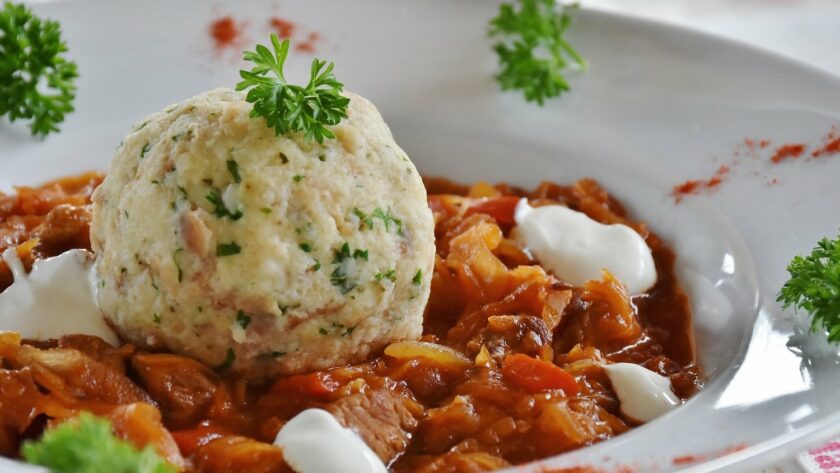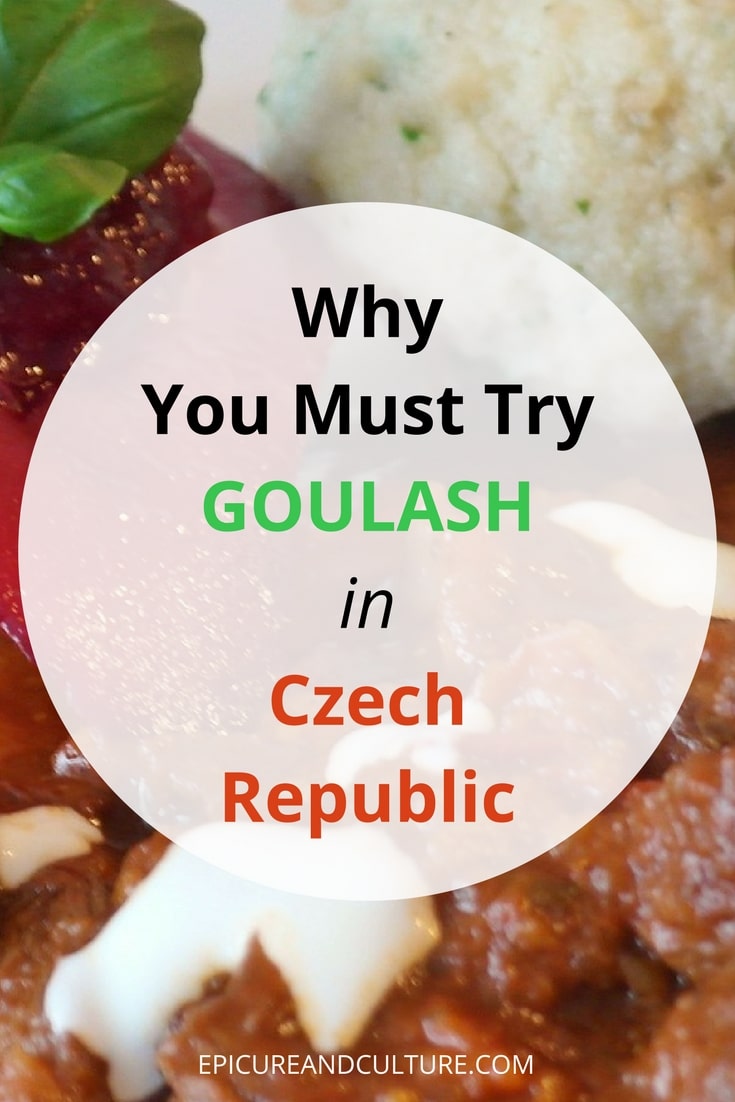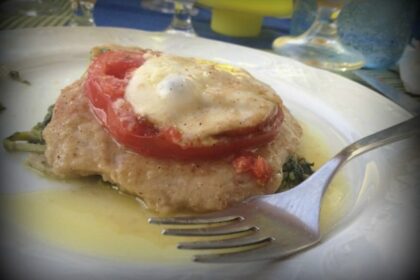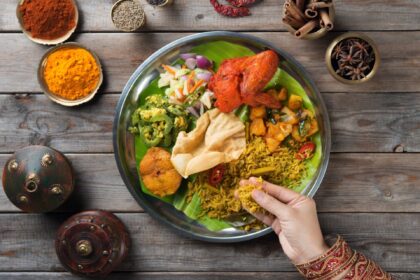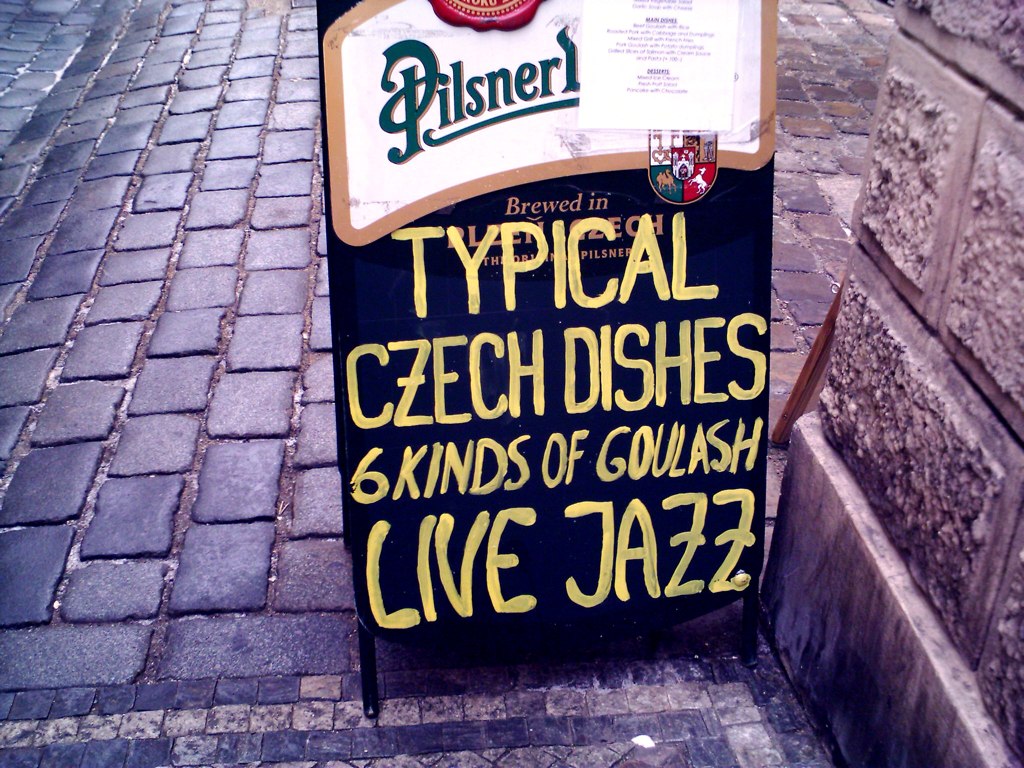
By Janet Mowat, Epicure & Culture Contributor
Imagine that you are visiting Prague for the first time. You check out the city’s iconic Old Town, winding through the narrow streets, peering at the menu boards of old-fashioned restaurants in charming medieval buildings. Wherever you look, it seems like they all make the same promise in bright, bold lettering: Traditional Czech Goulash Here. “What’s the big deal with goulash?” you might wonder.
Czech goulash is a thick, hearty stew flavored primarily with paprika and often served with knedliky, slices of spongy, bread-like dumplings. Though this basic presentation doesn’t change much, cooks can vary the experience by using different meats — pork and beef are the standard choices — or adding other flavors like caraway or sliced raw onion. Goulash is the quintessential Czech dish, highly coveted by tourists seeking an authentic local experience. But where did this status come from?

The History Of Goulash
As it turns out, if you take a closer look at Czech goulash, you can trace the entire course of Czech history and cuisine through this one delicious meal.
Many of the basic flavors of Czech food are based in local agriculture that can be traced back thousands of years. Onion, garlic, caraway and meat – especially pork – have always featured prominently in the regions that make up the modern Czech Republic. In Neolithic times, as trade routes expanded from the Mediterranean, new ingredients such as ginger and salt arrived to help flavor the meat and inspire more complex dishes.
“That was actually the first trace of international business [in the region], so to speak,” says Ladislav Pravaan, Curator of the Gastronomy Museum of Prague. This exposure to exotic new flavors continued until the fall of the Roman Empire.
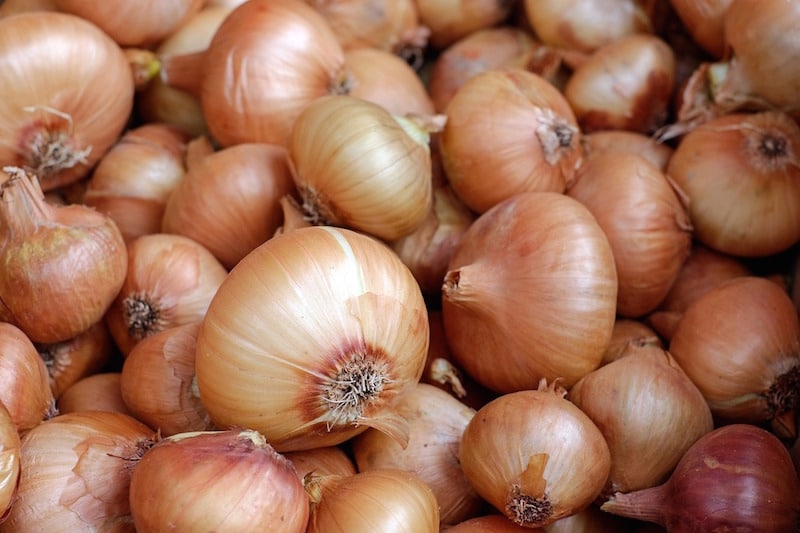
The next culinary revolution came with the discovery of the Americas, as explorers brought potatoes, tomatoes and peppers back to Europe. At last, all of the ingredients that make up goulash were in place.
Birth Of A Nation & A Dish
For centuries leading up to the 1800s, many Central European nations — including the territories that make up the modern Czech Republic — were under the rule of the Holy Roman Empire. These lands had become fairly homogenous due to free social and cultural exchange, and their food was very similar. But when the Holy Roman Empire dissolved and the Austro-Hungarians assumed control of Central Europe in the early 19th century, there was a resurgence in nationalistic interest among the individual states.
“That was the point when nationalism started to be communicated through food,” says Pravaan. “And that was the time when goulash was introduced to Bohemia [a region of the Czech Republic]. Going back, that was the peak of its popularity in our country.”
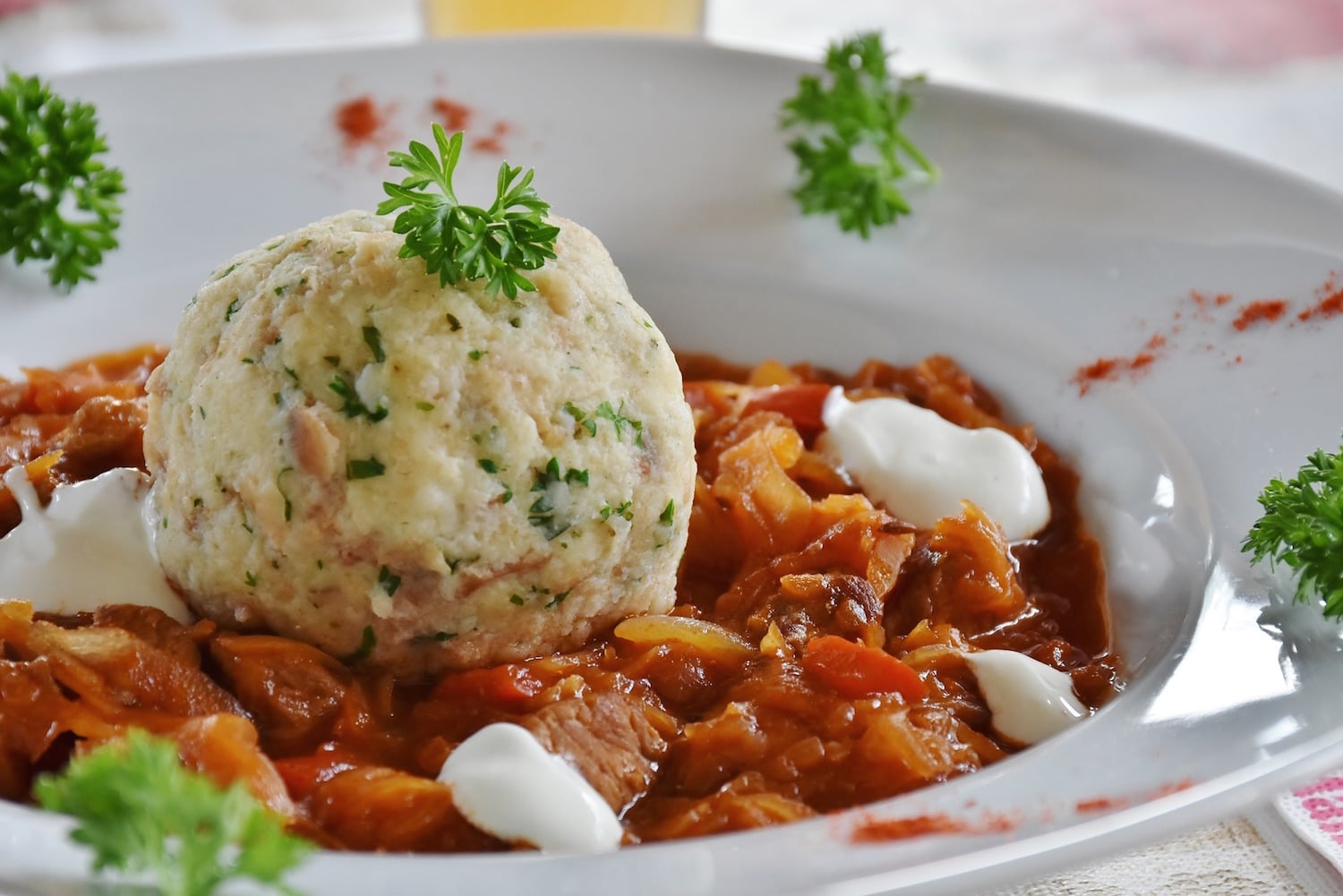
Goulash had been invented in Hungary as a simple beef soup that could be cooked in one pot over an open fire. In fact, the word literally means “cowboy food.” As the nations of Central Europe started to differentiate themselves, the Czechs began to adapt goulash to suit their own tastes and local ingredients.
The sweet paprika favored by the Hungarians was replaced by spicy paprika, “to go better with Czech beer,” Pravaan laughs. While Hungarian goulash was originally made with beef, the Czechs created new varieties of the dish, incorporating ingredients such as pork and sauerkraut, and making the consistency thicker and more stew-like. They also served it with knedliky, the local dumplings that are unique to the Czech Republic. The result is a dish that is like the Czech Republic itself: influenced by other Central European cultures, yet somehow distinctly and recognizably Czech.
Have you tried #Czech #goulash? Here's why you should! #culture Click To TweetCommunist Cuisine

At the end of the Second World War, the Czech Republic (then part of Czechoslovakia) was liberated by the Soviets and adopted a Communist government of its own. Under Communism, many aspects of daily life were strictly regulated, including the nation’s culinary life. Hygiene, restaurant interiors and meals themselves now had to adhere to national standards. There was only one cookbook, Recipes for Warm Meals, that the cooks of the nation were permitted to use. It’s thought that many traditional recipes that didn’t make it into the book have been lost forever due to standardization.
Pravaan, however, is quick to point out that the Communist influence wasn’t entirely negative.
“The quality of the food was good, it was okay. There was a lack of special foods, there was only a certain amount of available foods, but basically it was good and healthy.”
More exotic foods from beyond the Iron Curtain were almost impossible to find in the last half of the 20th century, but this meant that down-to-earth, homey dishes abounded. Goulash, being made up of local flavors and ingredients, flourished in this era, while other dishes became inaccessible.
In the nearly 30 years since the end of Soviet rule, there has been a gastronomic renaissance in the Czech Republic. With its borders reopened, Czech cuisine has started to experience an exciting influx of foreign influence.
Visiting #CzechRepublic? Here's the dish you MUST try! #food Click To Tweet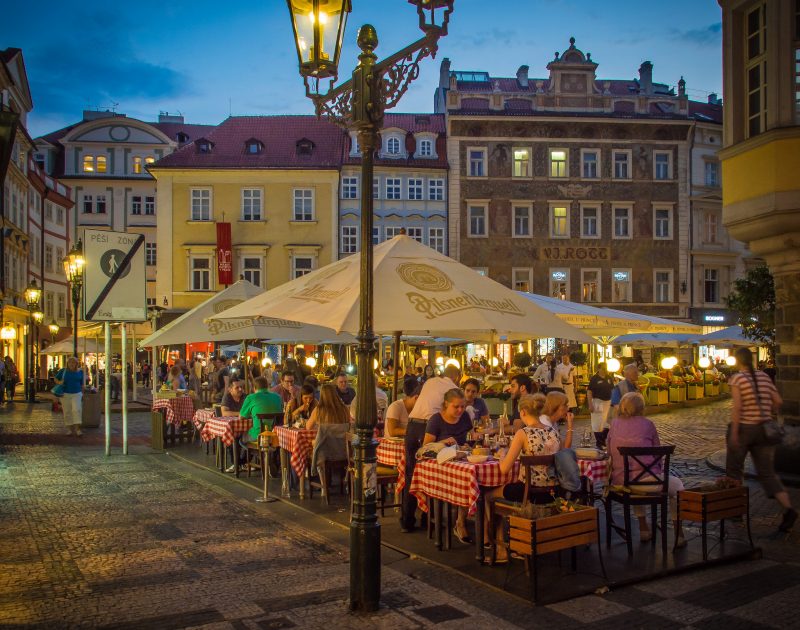
These developments have left locals with a complicated attitude toward traditional dishes like goulash. Foreign tourists clamor for an authentic Czech experience, which means that there will always be a robust market for hearty goulash in all the popular pubs and restaurants. But for the Czechs themselves, though it looks like goulash will always be a staple of their national cuisine, it can appear boring or uninspired compared with the innovations of a new generation of celebrated chefs.
What’s wrong with being old-fashioned, though?
As you settle onto a patio in the heart of Prague and watch people from all over the world enjoying this historic city, you can remember that the rich, fragrant stew sitting before you is offering a tour through millennia of Czech struggle, innovation, and tradition.
With thanks to Ladislav Pravaan and Jan Hubička. For more information on the Gastronomy Museum of Prague, check out their website.
What’s your favorite way to eat Czech goulash? Please share in the comments below!
Further Exploration:
How To Make Apfelstrudel Like You’re From Austria [Blog Inspiration]
Clever Travel Companion Pickpocket-Proof Garments [Travel Safety]
Czech & Slovak Food & Cooking [Delicious Reads]
Janet Mowat
Latest posts by Janet Mowat (see all)
- The Fascinating Heritage Of Delicious Czech Goulash - Mar 14, 2017
- Cream Tea: A Controversial Custom In South West England - Mar 1, 2017

